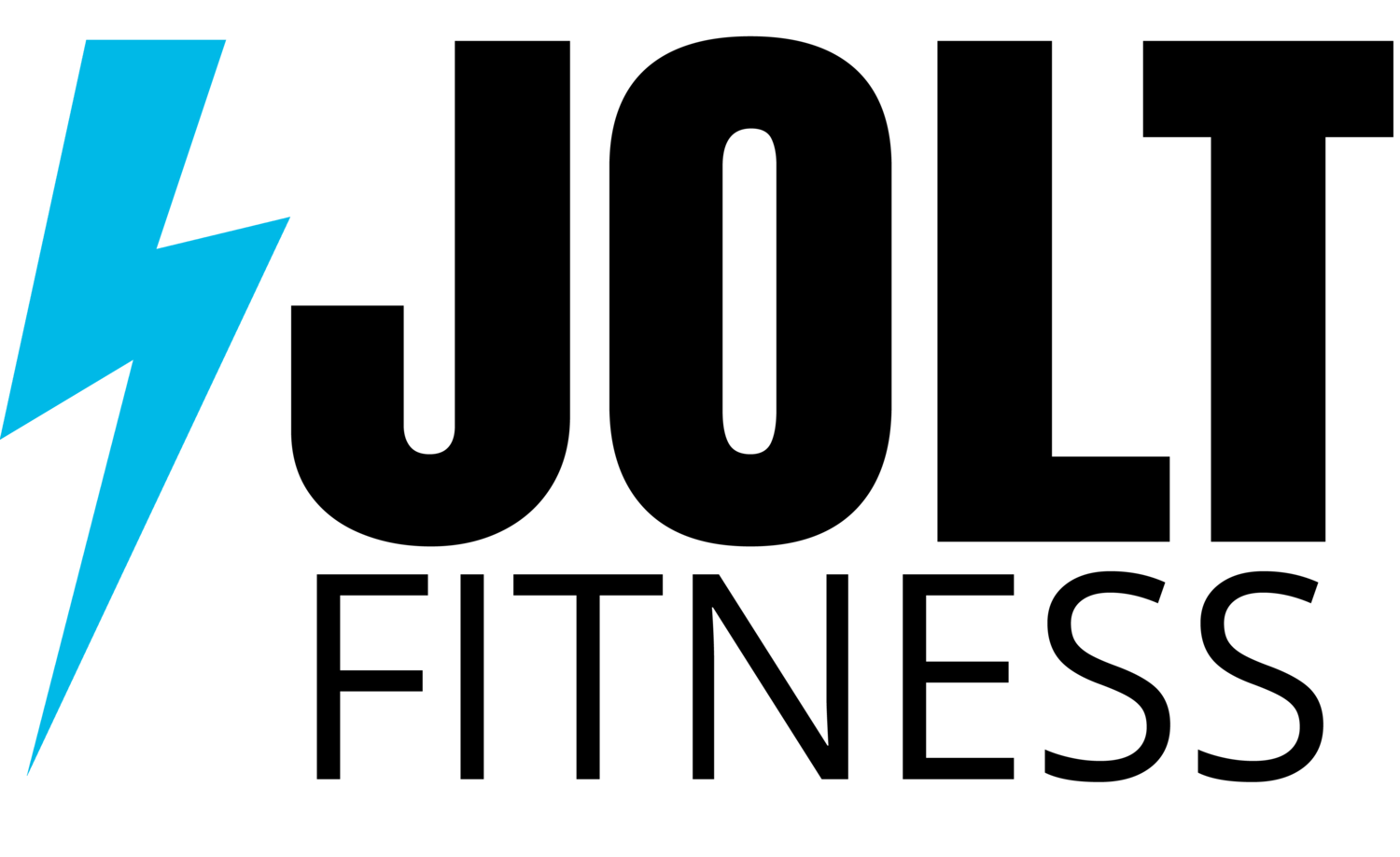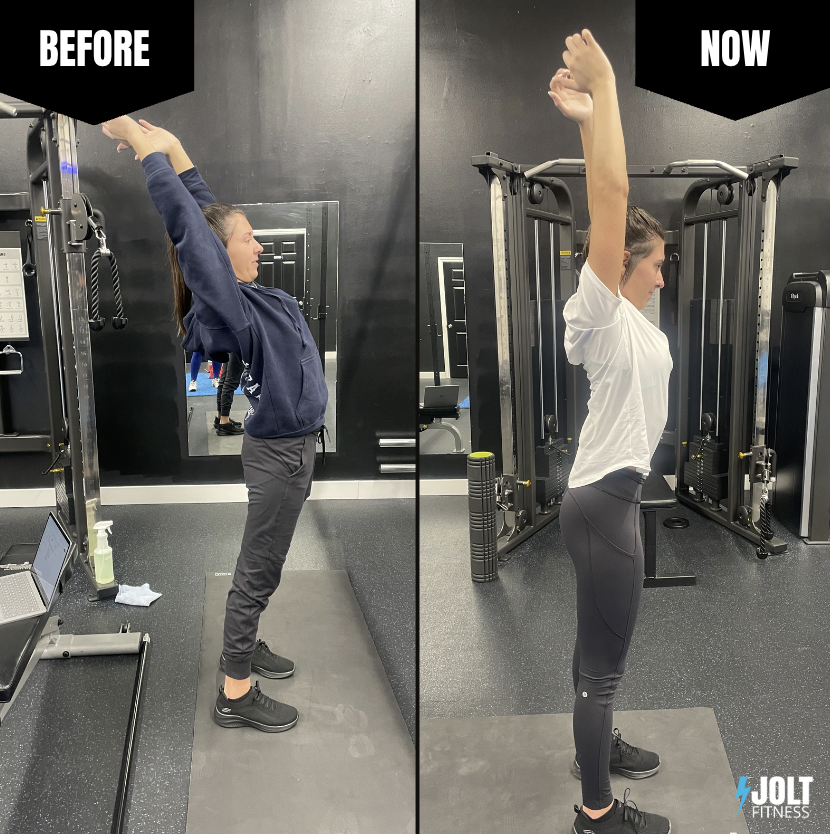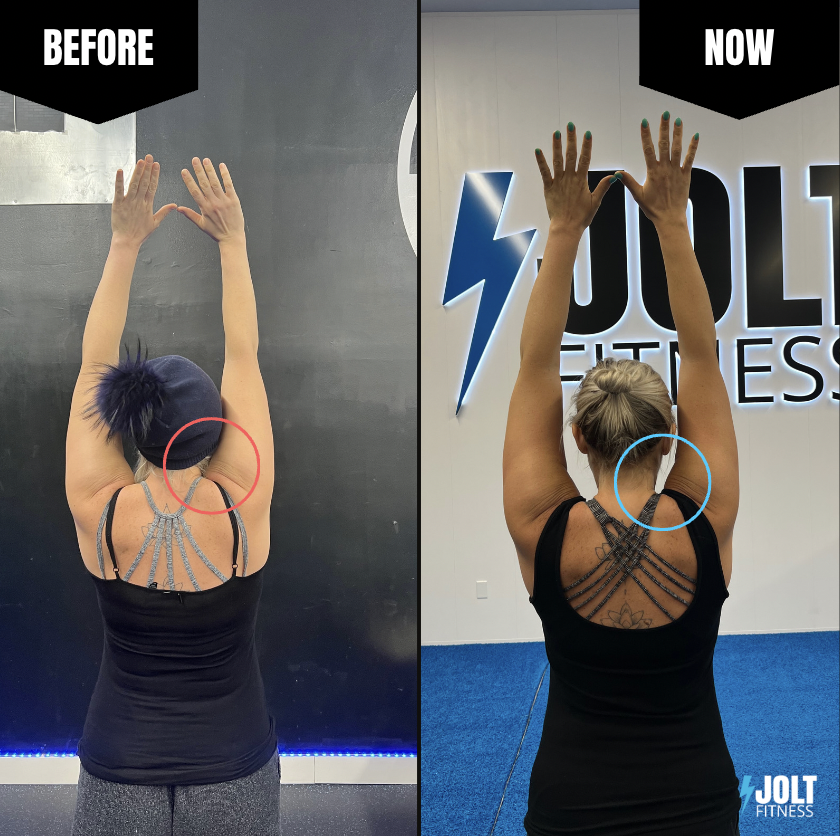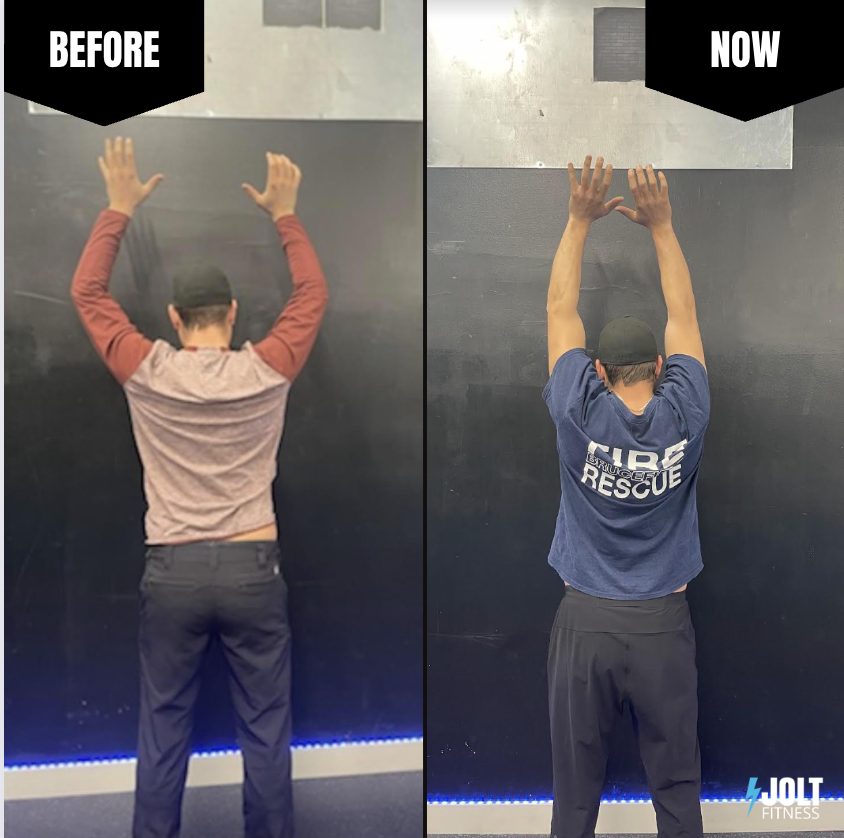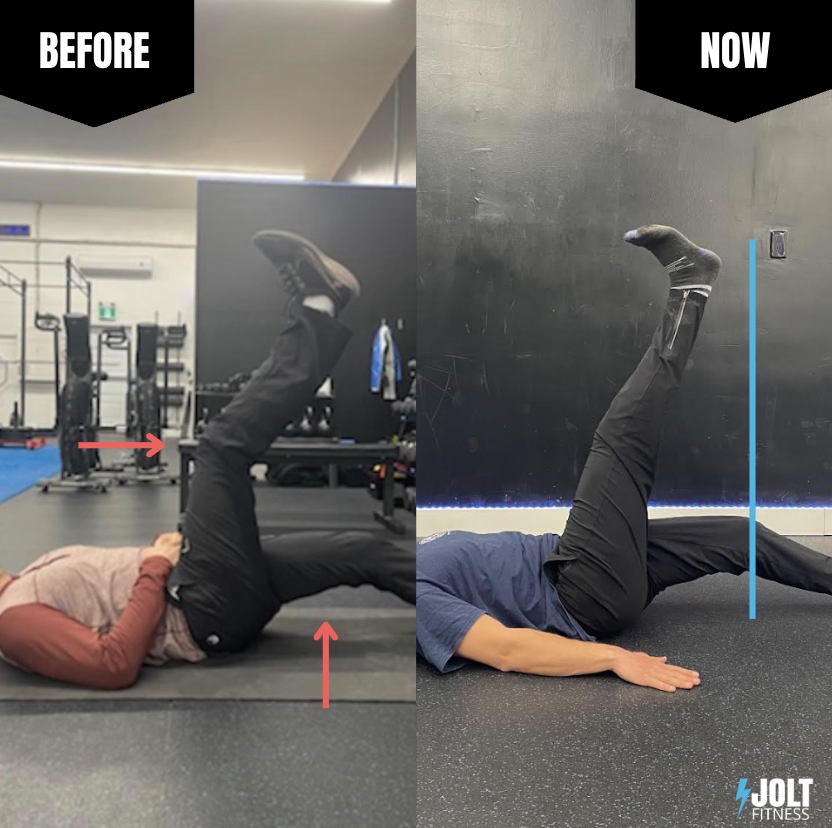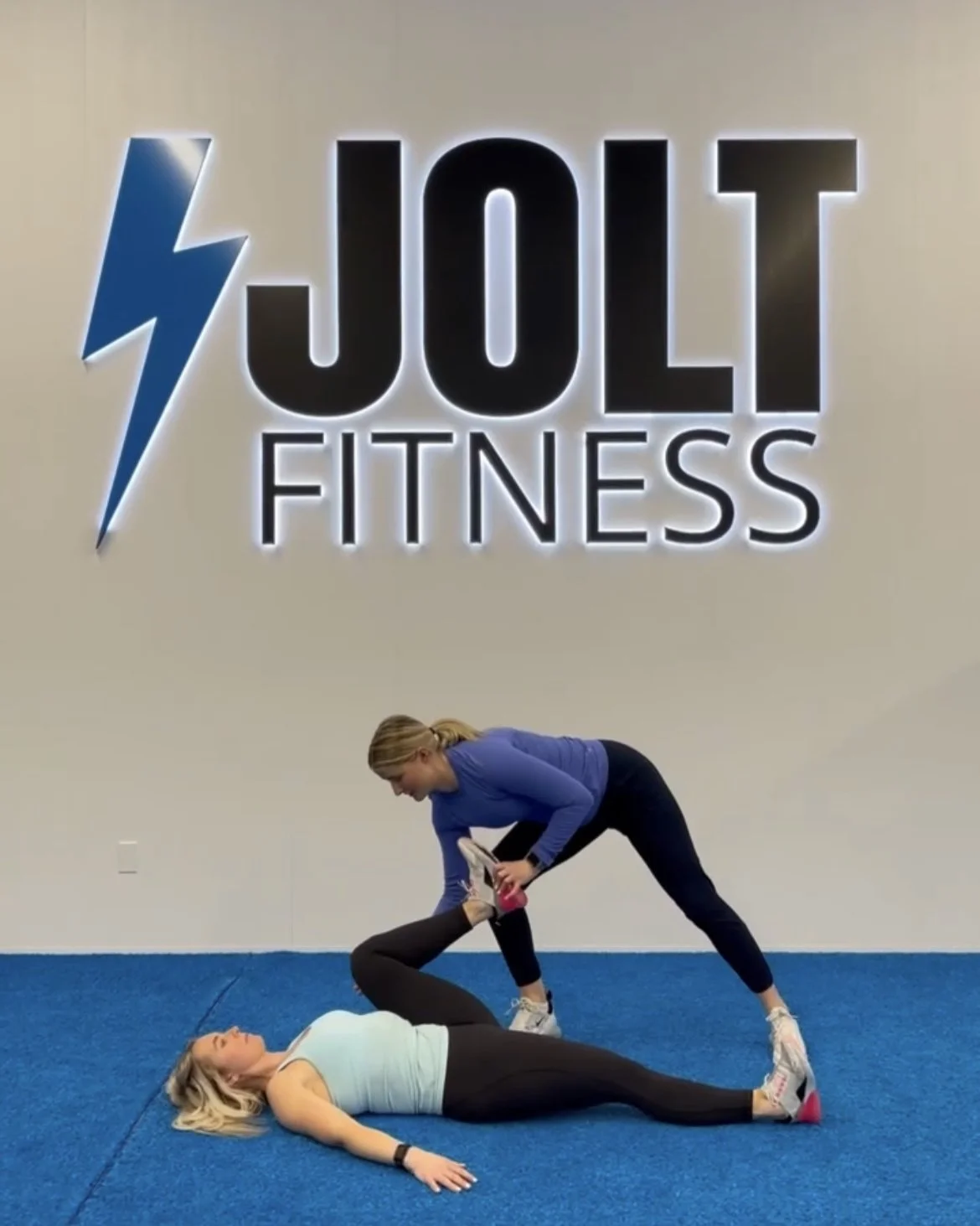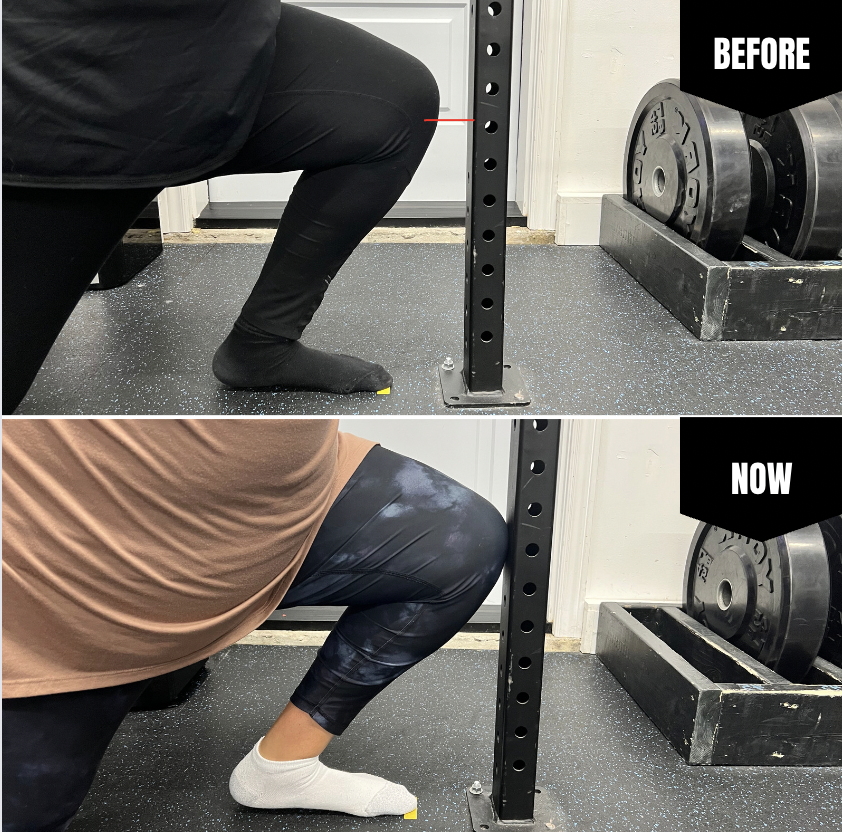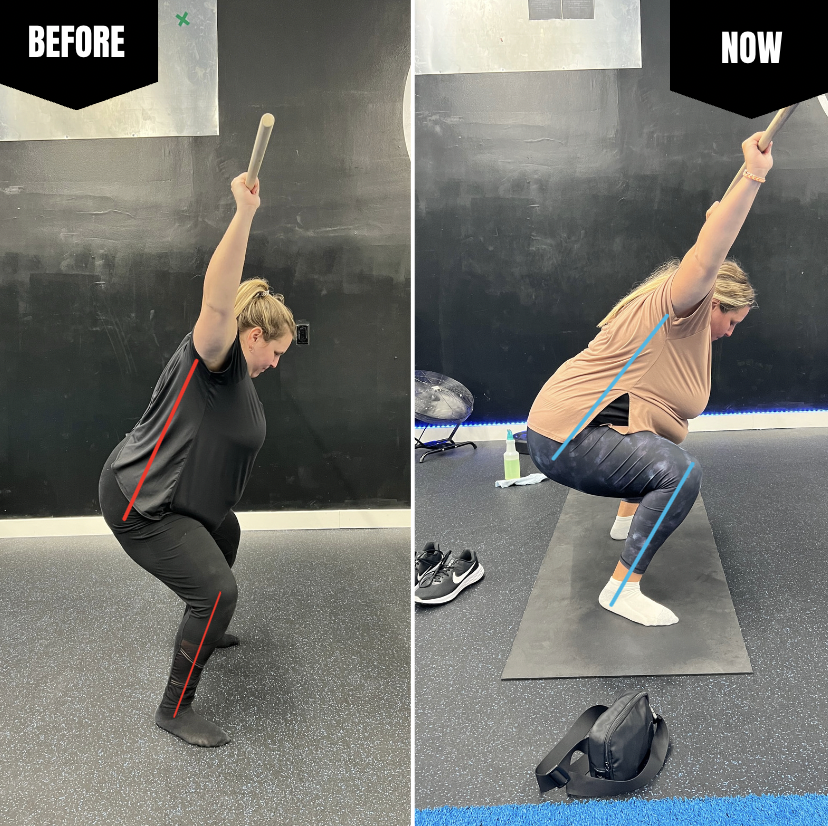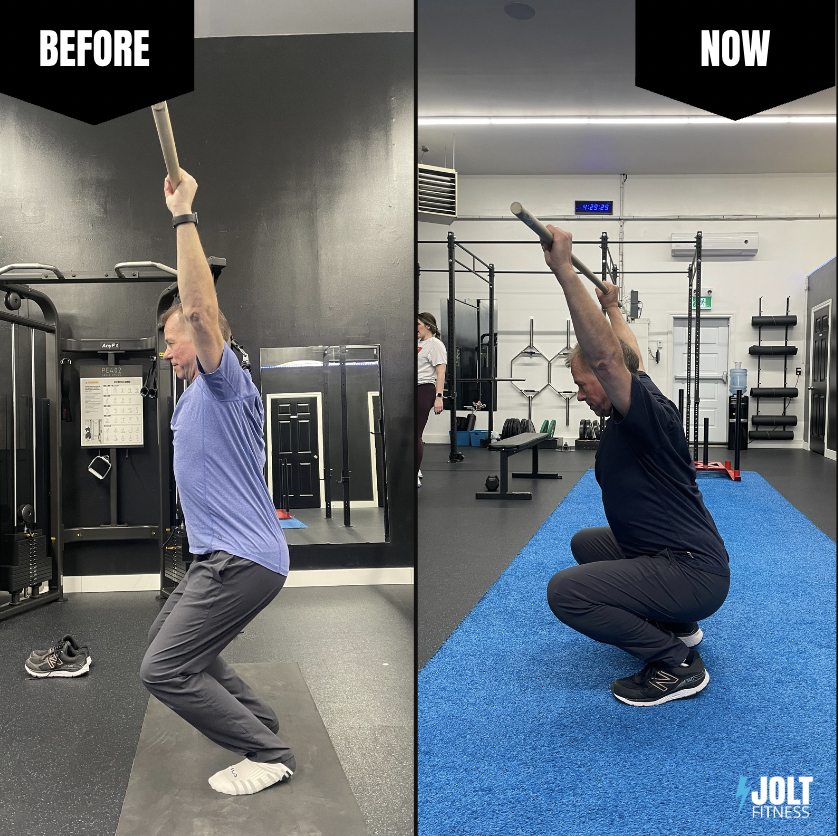JOLT PERFORMANCE TESTING DAY
Congratulations on completing the express version of the Jolt Fitness test. The full fitness test is utilized in an on-going basis during personal training. This is how Jolt Trainers create customized programming that builds resilient bodies without plateau and meets each individual at their current fitness level. We use this data to progress the Jolt Fam through effective resistance training month over month.
The goal Jolt Performance Day is to give all members access to the express version of the Jolt Fitness Test. With that data, we hope that you can utilize your classes most effectively, add beneficial drills to your warm-ups, and track your progress long term.
The express fitness testing protocol is just a glimpse into our personal training experience. This express fitness uses 50% of our standard mobility tests and 4/10 of our standard strength tests. This express fitness test does not utilize our cardiovascular testing. For a full fitness test and in-depth individual analysis, we recommend booking a 1-1 personal training session.
What do my test results mean?
In the following article we’ll provide some generalized training recommendations based on what these results could mean for you. This information should not be taken as medical advice. It’s important when following through on the methods below that you listen to your body first. If you’re struggling with chronic pain and injury, please book a 1-1 personal training session or see a physical therapist.
MOBILITY TESTING:
In a full mobility testing panel we will look at how you move on a joint by joint basis from head to toe. We’re looking for limitations along the kinetic chain that could effect overall function, strength and optimal health. At Jolt Performance Testing Day we completed six of the eleven Jolt Mobility Tests. We have a full online mobility program available here.
LUMBAR EXTENSION
In this test, we’re looking at multiple factors contributing to your movement. The participant reaches back as far as possible maintaining a braced core.
Movement wins in this position include:
Hips staying in line with the heels
Core staying braced
Ribs tucked down
Extension in the upper back
Biceps in line with the ears
Movement compensations (fails) in this position include:
Hips in front of heels
Excessive arch in the low back
Ribs flared
Reaching through the arms vs the upper back
General movement recommendations to improve results:
Prioritize pulling/rowing movements in your programming (seated row, bent over row, band pull aparts)
shoulder abduction
In this active test we’re looking at the movement of your scapula (shoulder blades) moving along your rib cage. We are watching for in-sync smooth movement as the arms lift overhead.
Movement wins in this position include:
Even space between the shoulders, ears & neck
Biceps touch ears
Even positioning of the shoulder blades along ribs
Arms stay straight & thumbs touch
Movement compensations (fails) in this position include:
The above photos are progress, but not quite optimal yet. Progress over perfection!
Elevated shoulders
Biceps not touching the ears
Lack of “windows” between shoulders and ears
Winging shoulder blades
Arms bent & thumbs unable to touch
General movement recommendations to improve results:
SUPINE HAMSTRING
In this active test we’re looking at the movement of the hamstring to 90 degrees with a straight leg. We are watching for the moving heel to pass the knee on the floor.
Movement wins in this position include:
Leg stays straight
Heel passes knee
Movement compensations (fails) in this position include:
Bent knee
Unable to pass knee
Lifting through the non active leg
General movement recommendations to improve results:
SUPINE Hip Flexion
In this passive test we’re looking at the movement of the femur in the hip socket. We can use this test to determine optimal squat stance.
Movement wins in this position include:
Thigh touches rib cage
Neutral spine
Movement compensations (fails) in this position include:
Pinching, pain or stiffness in the inability to touch thigh to rib cage
Pressing or rounding low back into floor
Opposite leg lifting off floor
General movement recommendations to improve results:
ANKLE DORSI FLEXION
In this active test we’re looking at the movement of the ankle joint with the intention of touching the knee to the rig while maintaining foot contact. For participants over 5’5 the toes are lined up on the back of the line, those less than 5’6 are on the front of the line.
Movement wins in this position include:
Knee touches rig
Heel maintains contact on the floor
Movement compensations (fails) in this position include:
Inability to touch knee to rig
General movement recommendations to improve results:
overhead squat
This active test provides us the full picture of how all our movement screens work together to produce one compound movement and can be a great overall progress measure.
Movement wins in this position include:
Dowel over centre of gravity
Biceps in line with ears
Knees over toes
Mostly upright torso
Depth to at least 90 degrees
Movement compensations (fails) in this position include:
Dowel too far forward or back
Lack of depth through ankles, knee and hips
Folding from the waist (forward chest)
Notice how everyone’s low squat “after” photo looks slightly different. There’s no such thing as “perfect form”, it’s about combing optimal movement function and positioning that feels resilient for you.
STRENGTH BALANCE:
The strength balance tests help us evaluate areas of weakness through all planes of movements. The tests used can help us determine if a client needs more posterior strength (back of the body) or anterior strength (front of the body). It can help us determine imbalances from total strength to single leg/arm stability. It gives us total strength balance left to right, front to back, and upper to lower. This information allows us to create strength building programs that are 100% customizable to the client’s goals and current areas of weakness. The strength balance can never fully be “completed” as we’re constantly striving for a balance as we progress in the gym.
In the express version of the Jolt Fitness Test we have used four of ten tests to help determine if clients need to focus their efforts more on upper or lower body, as well as posterior vs. anterior strength.
DEADLIFT
The deadlift goals we have set are general recommendations and by no means are mandatory numbers or goals for all people. You do not need to be able to hit these goals to train at Jolt Fitness. A 1-1 personal training session would individualize these goals based on your current fitness level. However, these generalized numbers are where most people start to thrive in optimal movement function and resiliency.
BEGINNER DEADLIFT GOALS (<1 year of personal training experience):
Female: Bodyweight for 1 rep
Men: 1.5x Bodyweight for 1 rep
INTERMEDIATE DEADLIFT GOALS (1+ year of personal training experience):
Female: 1.5x Bodyweight for 1 rep
Men: 2x Bodyweight for 1 rep
General movement recommendations to improve results:
Prioritize movements that work the posterior chain (back of the body)
Deadlift variations, rows, hamstring curls, hip thrust, bridge
Improve grip and core strength using loaded carrys
BACK SQUAT
Our back squat recommendation for optimal health is 80% of your deadlift. Therefore, if a client deadlifts 100 pounds for 1 rep, the client should be able to squat 80 pounds for 1 rep.
General movement recommendations to improve results:
Prioritize movements that work the anterior chain (front of the body)
Improve core strength using stability based drills like palof presses and deadbugs
CHIN UP
Our chin up recommendation for optimal health is 67% of your back squat goal. Therefore, if a client is aiming to squat 80 pounds for 1 rep, the client should be able to do a chin up at 53.6 pounds (bodyweight included). It’s important to remember that these are general goals and by no means do you have to be able to do a chin-up for optimal health. If chin-ups aren’t a goal for you right now, that does not mean you can’t continue to build back and bicep strength with other exercises. Additionally, you’ll notice for most people, to do a chin up with exactly 53.6 pounds they would have to cut off the lower half of their body. We can use the Lat Pull Down machine with a supinated grip to test the equivalent strength without doing a chin-up.
General movement recommendations to improve results:
Prioritize movements that work the back and biceps like Lat Pull Down variations
Use bands and eccentrics to improve strength
Use shoulder depression/elevation stability drills like scapulae pull ups to build optimal muscle recruitment patterns
Build grip and core strength using active bar hangs
BENCH PRESS
Our bench press recommendation for optimal health is 75% of your back squat goal. Therefore, if a client is aiming to squat 80 pounds for 1 rep, the client should be able to bench press 1 rep at 60 pounds.
General movement recommendations to improve results:
Prioritize movements that work chest and triceps
Include bench press variations like incline, close grip and dumbbell options
Use shoulder retraction/protraction drills like scapular push ups to build optimal muscle recruitment patterns
what do I do now?
It’s important to remember the movements above are not exercise prescriptions and should be considered general movement recommendations. If any movement makes pain signals or discomforts increase, discontinue the movements and book in a 1-1 personal training session. To take your training to the next level, complete all testing, and receive customized training recommendations book a 1-1 personal training session.
Consider using these new insights when deciding what to prioritize in Lift sessions. Use your new mobility drills as a pre-warm up when you arrive to class early. Ask your coaches questions when lifting based on your testing results.
Hold onto your performance testing paper as Jolt Performance Day will return next year where we look forward to tracking your improvements.
Don’t forget to share your love for training by posting about what you have learned on Social and tagging @joltfitnesshc or leave a review on Google and Facebook.
